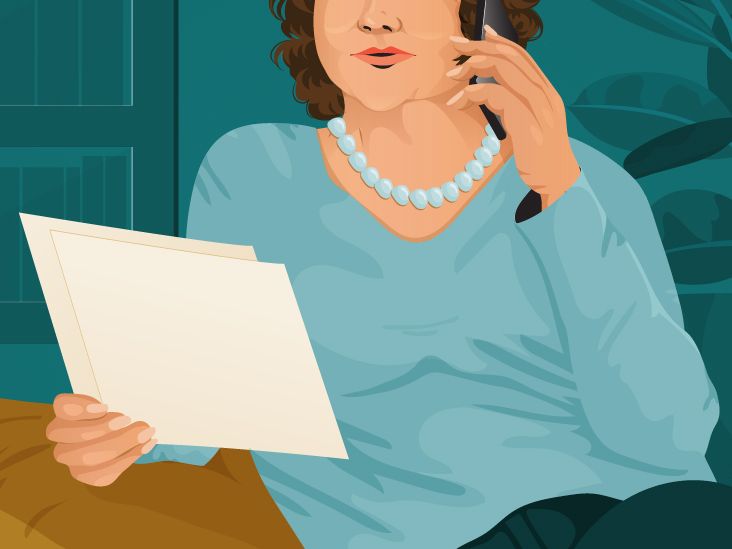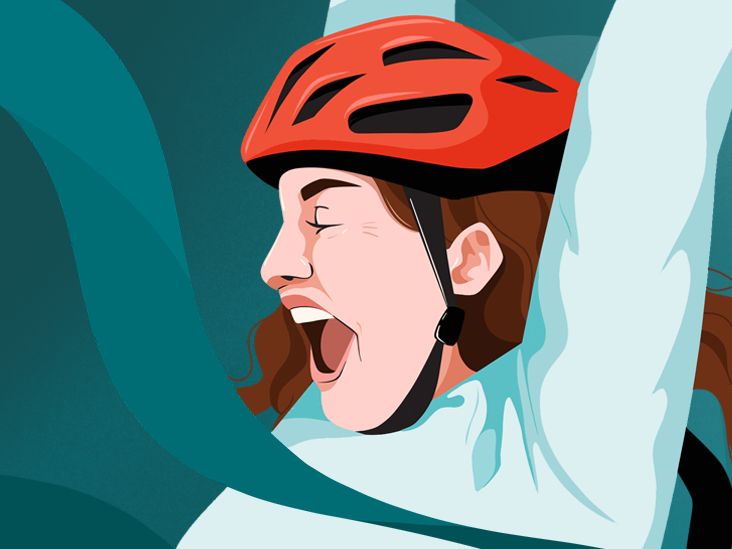
I now know almost the exact day that I got Lyme disease, thanks to the medical records of my deceased dermatologist.
“Did not see tick,” he wrote, in August of 1997, noting the presence of “erythema multiforme” on my chest — the classic red bull’s-eye rash.
At the time, I knew nothing about Lyme disease or ticks. And despite noting the characteristic rash, my dermatologist didn’t mention anything about it. He gave me a cortisone shot, prescribed an anti-inflammatory ointment, and sent me on my way.
By the time I finally learned I had Lyme, I was 67 years old. At that point, I had suffered from undiagnosed Lyme for 12 years, piling up a long and diverse list of symptoms, most of which I’d attributed to aging.
Unfortunately, many doctors are not adequately trained to recognize the varied symptoms of Lyme disease, which often mimic other ailments. Many people with undiagnosed Lyme go from doctor to doctor looking for answers, only to come up short.
Organizations like ILADS (the International Lyme and Associated Diseases Society) can help you locate a Lyme-aware healthcare professional in your area.
“My first piece of advice to anyone who has any symptoms of Lyme disease: Find a Lyme-aware doctor.”
Lyme disease is caused by the bite of a black-legged tick infected with Borrelia burgdorferi bacteria. The main host for these ticks is the white-footed mouse, a rodent native to North America. As they grow, the ticks are often picked up by other animals, especially deer.
Lyme disease cases are known to be in at least 48 U.S. states.
Infected ticks transmit Lyme when they attach to your skin and feed on your blood. Once the tick attaches, it transmits the bacteria through its saliva. The bacteria enter the bloodstream and spread throughout the body — hence the diverse symptoms.
Borrelia burgdorferi are spiral-shaped bacteria known as spirochetes. Spirochetes are clever; they can “hide” from your immune system, making them particularly difficult to fight off. The bacteria can also hide during treatment and persist even after an initial course of antibiotics.
My symptoms began as a series of unexplained skin ailments. I didn’t question these, as I have had psoriasis since I was an infant and my skin has always been sensitive to insect bites, fragrances, and other irritants.
The Lyme brought outbreaks of red itchy bumps on my limbs and trunk that kept me up at night. The dermatologist called these PLEVA (pityriasis lichenoides), a rare condition sometimes associated with bacterial infections like Lyme.
I also developed rosacea on my face. Had outbreaks of red blotches on my arms and legs. And I would get huge, ugly bruises on my arms and legs whenever I brushed up against something.
But the scariest skin development was a condition called parapsoriasis, which can be a precursor to T-cell lymphoma. I was referred to an oncologist who proposed UVB light treatments for my legs. I found a used UVB light machine at a reasonable rate so that I could treat myself at home.
I also developed a series of joint and muscle ailments. I developed painful plantar fasciitis in my heels. A podiatrist (foot doctor) gave me a foot boot to wear at night and referred me to physical therapy, which helped.
My knees became painful and I developed bursitis in my hips. An orthopedist (bone and joint doctor) recommended cortisone shots and more physical therapy.
I also had terrible pains up and down my shins, but the orthopedist told me that there was “nothing there that could cause pain.”
I developed arthritis in my hands. Some of my fingers became deformed and I experienced bone loss in my thumbs. But the doctor assured me that arthritis in the hands was normal at my age.
My toes and feet also developed problems. All of my shoes became uncomfortable. I began wearing specialty orthopedic oxfords.
It was the cognitive symptoms that bothered me the most. I had trouble concentrating and remembering things. Once, I went into a big box store and couldn’t remember what I went there to buy.
When I drove somewhere, I had to carefully plan out the route, even when it was a familiar trip to a store or a doctor. I had mood changes as well, including some periods of depression.
I couldn’t figure out what was happening to me.
I felt as though I was in the Yiddish song “A Miller’s Tears” — where the lyrics (translated) are: “The wheels keep turning, the years keep going, and I get old, and gray, and exhausted.”
It’s a plaintive melody, and I posted it on my desktop because I thought it described me and I liked to listen to it.
The breakthrough came when my husband’s physician casually mentioned Lyme as a possible cause of his knee pain. He had not seen evidence of a tick bite, but he did walk daily in a farm area where deer roamed freely, so he began researching Lyme.
His symptoms — fatigue, serious knee pain, light sensitivity, irritability — added up. So, with the help of ILADS, he found an excellent Lyme-aware doctor in our area.
My husband concluded from his research that I also probably had Lyme. I started to read over the research material, saw the Lyme-aware doctor, and began treatment.
Later, a test by the specialty laboratory in California, IGeneX, proved positive for Lyme.
My initial diagnosis was made based on the combination of symptoms I had, despite an earlier ELISA test that came back negative. ELISA stands for enzyme-linked immunosorbent assay, and it checks for antibodies to Lyme.
In my opinion, the ELISA test is often unreliable. Although this is the test recommended by the CDC, it emphasizes specificity, according to ILADS, at the expense of sensitivity.
The IGeneX test is a more reliable measure of Lyme infection, but even then, as ILADS notes, “… laboratory results can support the diagnosis but cannot, in isolation, make or rule out the diagnosis of Lyme disease.”
The Lyme doctor began treatment with the antibiotic clarithromycin (Biaxin) in June and added metronidazole (Flagyl) in August.
I began keeping a Lyme log, which is something I recommend. I used it to document symptoms, medications, and healing.
The Lyme doctor pulsed my antibiotics, using one regimen, then stopping it and using a different antibiotic regimen.
She prescribed other antibiotics in stages. I took doxycycline, minocycline, tetracycline, and more.
Supplements were also part of the treatment, including MSM (methylsulfonylmethane), and vitamins B12 and D (I had been very low in both). Later, I also took herbal tinctures made with cat’s claw and banderol, which both have antibacterial properties.
Some of my symptoms went away quickly — for example, the unsightly bruises faded and didn’t return. But other symptoms, like rashes, parapsoriasis, fatigue, joint and limb pain, and hand stiffness, persisted off and on.
My husband, who started antibiotic treatment about 2 years after his initial infection, was considerably improved after 6 months of treatment. But it would be years before I felt well enough to stop the antibiotics entirely.
For a while I had to use a cane for balance.
But I still feel lucky. After my diagnosis, I responded well to the antibiotics. Also, by the time of my diagnosis, I had Medicare insurance, which covered prescriptions, some testing, and physical therapy.
“When I first got on the exercise bike at physical therapy, I could barely push the pedals around.”
Physical therapy, prescribed at various stages for symptoms, helped tremendously.
But still, aches and pains made exercise seem impossible. I barely even walked, which I used to do for exercise.
So, as part of the recovery process, I used a rebounder, a small trampoline that at first I just jiggled on. Gradually, I advanced to a slow walk and then a jogging motion on the rebounder. I enjoyed it because I could watch a film or listen to a book while moving.
Eventually, I saw an ad for a 30-minute women’s circuit of resistance training that works every muscle group. It worked for me and I began to regain some muscle.
When I moved to Massachusetts in 2012, I found another very good Lyme doctor, who continued treating me with antibiotics off and on until 2019. Again, I was lucky to find a Lyme-literate doctor who was involved with Lyme treatment research.
The move from Virginia to Massachusetts was difficult because I was still a little fuzzy and lacked confidence in my ability to complete tasks. It put a lot of the burden on my husband.
I continued physical therapy here and became significantly stronger. When I first got on the exercise bike at physical therapy, I could barely push the pedals around. Very slowly I worked my way up to 15 minutes and more.
I think I’m now free of Lyme, but I still have remnants of the damage. My fingers are crooked, I wear hand splints to stabilize my thumbs, and my grip and dexterity are weak. I still have constant tinnitus (sometimes very bad), and my left leg gives me problems, but I’ve definitely improved. Antibiotics work miracles!
Looking back, I wonder how I could have lived for 12 years with worsening symptoms and no explanation. What was I thinking? Was I on automatic pilot, oblivious?
In my defense, I had a demanding job as a writer/editor, and I was a workaholic.
My mom had come to live with us a year before I was infected, after her stroke. I felt that my main purpose was to be there for her, cooking, taking her to medical appointments, and later visiting her daily in the hospital.
I did not, in any case, want her to worry about me. At the time, my own health seemed secondary.
And the array of doctors I consulted separately for various symptoms were clueless.
Why did my experienced dermatologist never mention Lyme, when he saw the bull’s eye rash and asked about a tick? His negligence seems inexcusable.
Reading over my daily log that started in 2009, I am amazed that I made it through. My symptoms recorded day-to-day make me sound like a sick old lady or a crank.
I am certain that without antibiotic treatment, I would now be in a wheelchair. And who knows what my mental state would have been.
It was infuriating, when researching Lyme, to hear from prominent doctors who question the existence of chronic Lyme. Doctors who advise “20 days of antibiotics (or less) and you’ll be fine.” Who tell people, especially women, that they have a psychiatric problem.
The ignorance in the medical profession can be monumental. My own saga has given me a profound skepticism about the practice of modern medicine. Doctors are just people. They have prejudices and they make mistakes.
If you have any Lyme symptoms, make sure you get competent treatment and don’t settle for a physician who minimizes your concerns.
The good news is that Lyme research is advancing, and newer treatments are available, including a protocol for long-term Lyme. There’s also a growing literature about Lyme, including films and autobiographical accounts, so it’s much easier to become Lyme-literate than it used to be.
And if you want to get well, you have to become Lyme-literate.
You also have to be able to advocate for yourself and not be intimidated by someone with an advanced degree. If I find out now that a primary care physician or a specialist I’ve been referred to plays down Lyme, I don’t go back to that person.
I know I’m repeating myself, but I don’t want others to go through years of undiagnosed or misdiagnosed symptoms the way I did:
- Find a Lyme-literate doctor.
- Become Lyme literate, watch the Lyme films, and follow the Lyme advocacy groups.
- Keep a log of how you feel, your medications, and your doctor visits.
- Trust your own judgment, and don’t accept a diagnosis that says your symptoms are just age, or in your head. It’s your body, and your life at stake.
This is a first-person essay from someone with Lyme disease. It has not been medically reviewed.
Marjorie Hecht is a longtime magazine editor/writer, now working as a freelancer on Cape Cod. Her specialties are science, technology, and medicine, but her eclectic career includes being a reporter at the United Nations and covering politics in Washington, D.C. She has an MSW from Columbia University, a BA from Smith College, and she did postgraduate work in race and demography at the London School of Economics.


